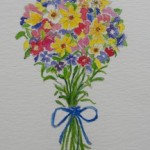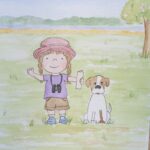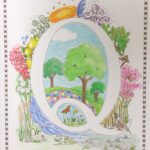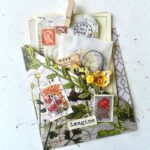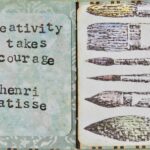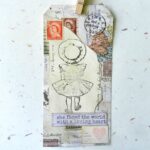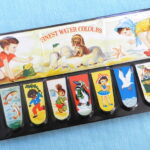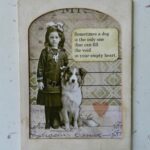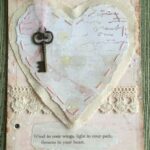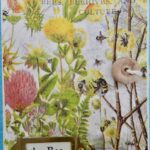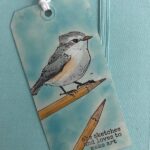A Natural Influence: Nature and the Brontë Sisters, Part Three
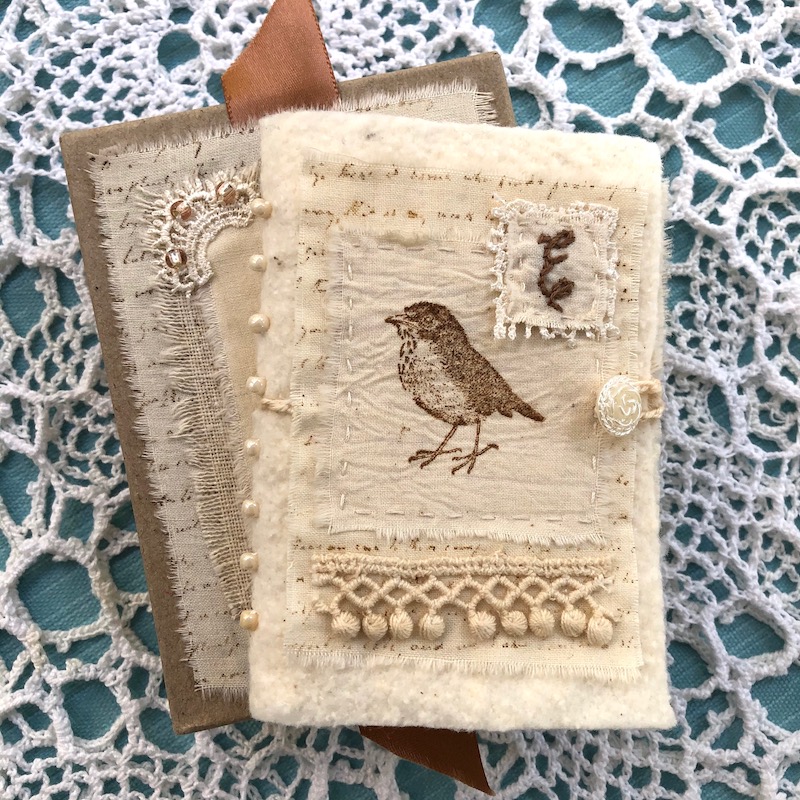
Part Three: Emily
I’m sure it has happened to you: You just know you and your favorite author or historical figure would have been “besties”. That’s just how I feel about Emily Brontë. She loved to walk and felt walking benefitted both her body and mind. She felt a kinship with the natural world, absorbing and then interpreting it. Mary Robinson, in her 1883 biography of Emily, put it this way:
“Never was a soul with more passionate love of Mother Earth, of every weed and flower, of every bird, beast, and insect that lived.”
Emily’s poetry evokes beautiful natural images as in “A Daydream”, “Shall the Earth No More Inspire Thee”, and “My Lady’s Grave”, the first verse of which is here:
The linnet in the rocky dells, The moor-lark in the air, The bee among the heather bells That hide my lady fair.
Charlotte wrote of Emily, that the moors “were what she lived in, and by”. Emily beautifully describes them in “High Waving Heather”, written in 1836. First verse here:
High waving heather ‘neath stormy blasts bending Midnight and moonlight and bright shining stars, Darkness and glory rejoicingly blending, Earth rising to heaven and heaven descending, Man’s spirit away from its drear dungeon sending, Bursting the fetters and breaking the bars.
Nature is a powerful force in Emily’s prose as well. In her novel, Wuthering Heights, Emily’s moorland backdrop set the stage for the tumultuous story of Cathy and Heathcliff. The wrath of nature appears early on in the story with Lockwood taking refuge from the snowstorm at Wuthering Heights. In a later passage, Cathy describes her idea of “heaven’s happiness” with images of white clouds, a west wind blowing, larks, blackbirds, linnets, and cuckoos, and “swells of long grass undulating” on the moors.
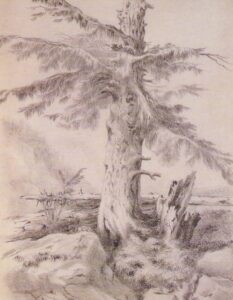
Courtesy of Brontë Parsonage Museum
Emily’s love of flora and fauna found its way into her artwork as well, and includes portraits of her dog, Keeper and her bird, Nero. She also produced many nature studies. This is “Study of a Fir Tree”, done in pencil, dated 1842.
Many pieces of Emily’s art can still be seen in the family home, now the Brontë Parsonage Museum, in Haworth, England. Upon entering the parsonage, one feels that Charlotte, Anne, and Emily have just popped out for an afternoon walk. The house is mostly unchanged, filled with personal possessions, furniture, and clothes. In the dining room, the wooden table where the sisters spent lots of time, still shows the “E” carved by Emily. My favorite object has to be the little wooden stool that the sisters carried with them on walks.
My personal Brontë journey has been a wonderful look at the English landscape and the stories of three incredible women whose lives and works reflect courage, perseverance, and incredible insight – all of which make their writing relevant even today. Writing under the pseudonyms of Currer Bell, Acton Bell, and Ellis Bell, the Brontës faced prejudice from the beginning, but went on to present the world with timeless gifts of literature.
For more on the Brontë Parsonage Museum, visit www.bronte.org.uk.
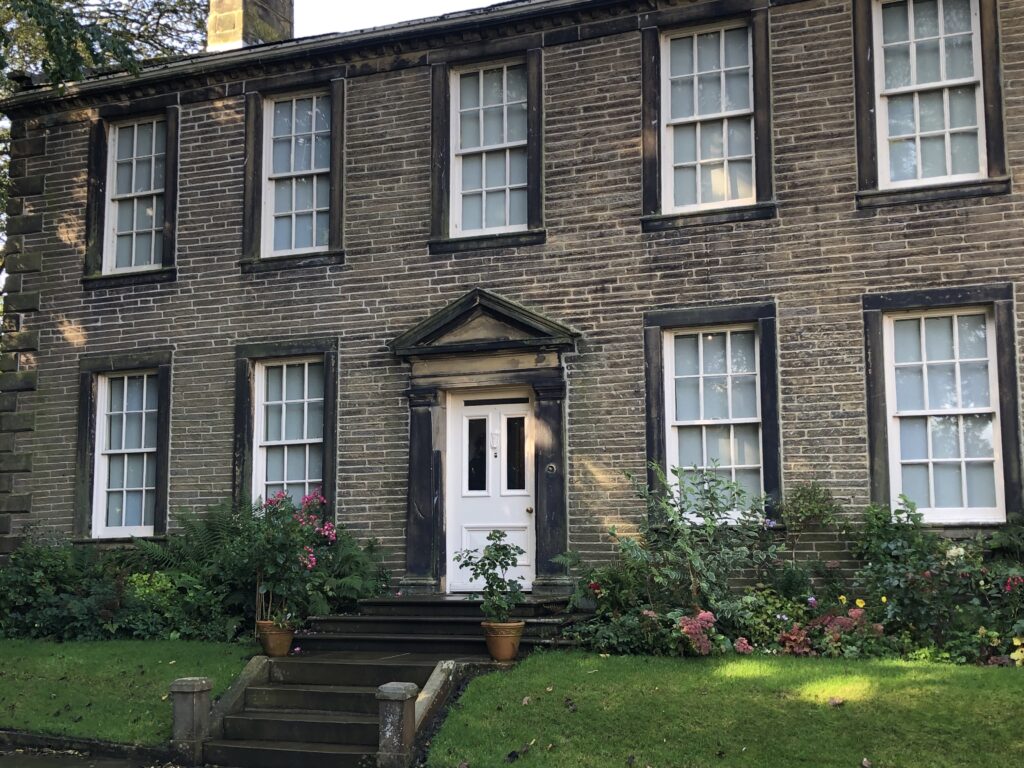
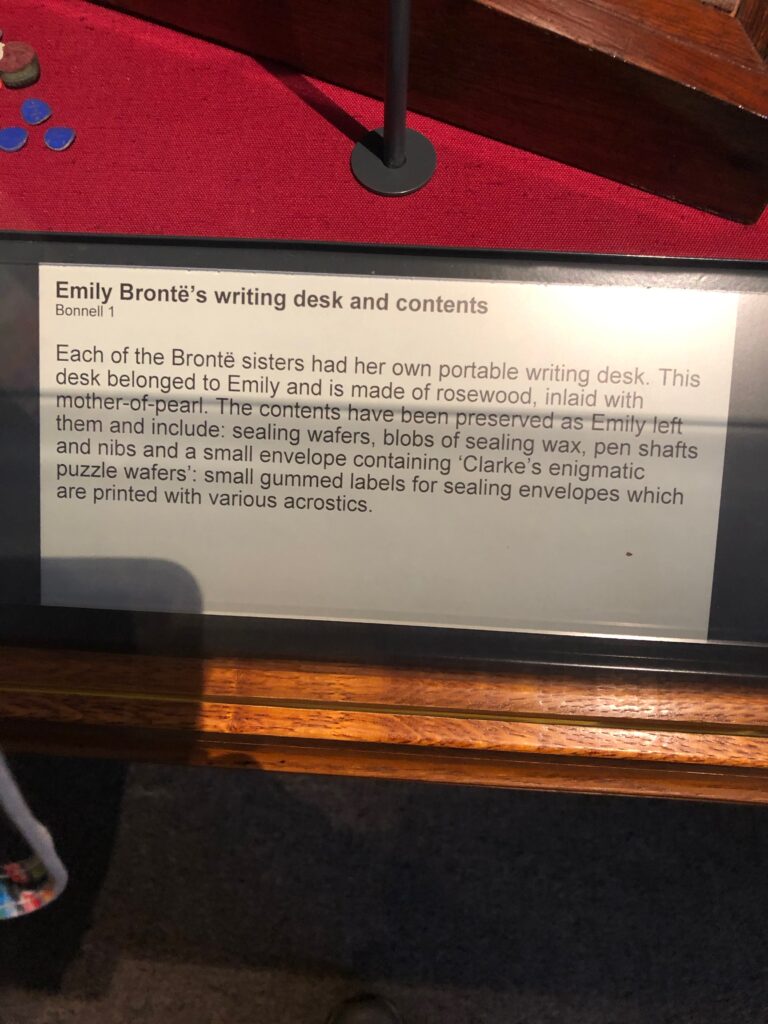
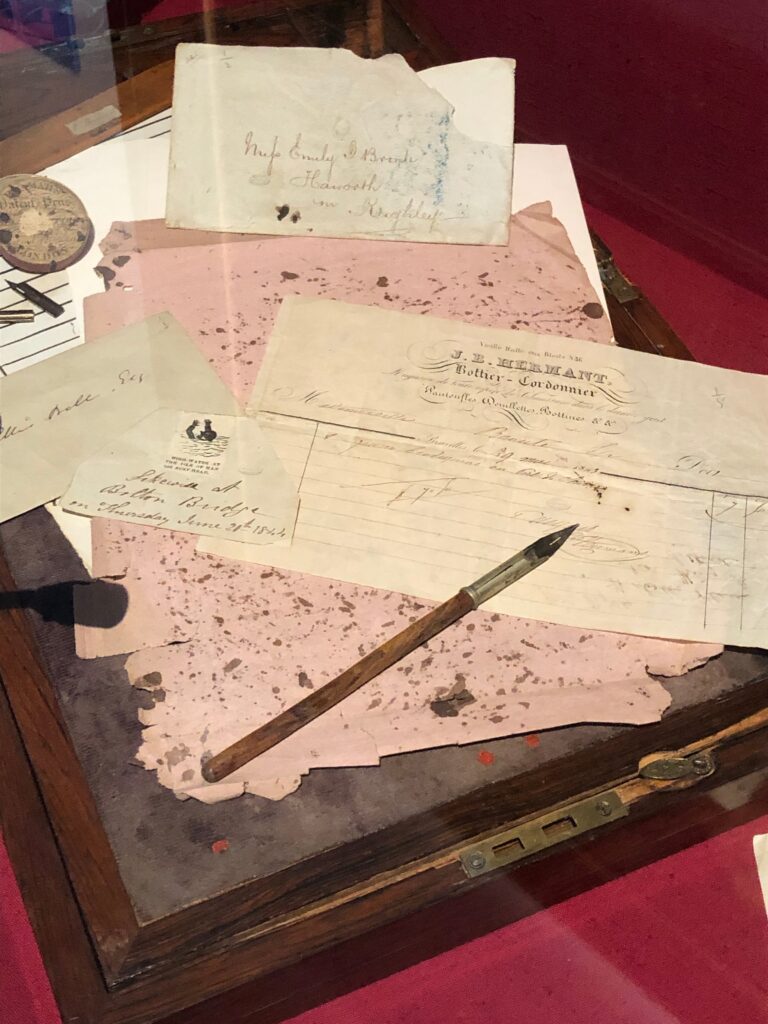
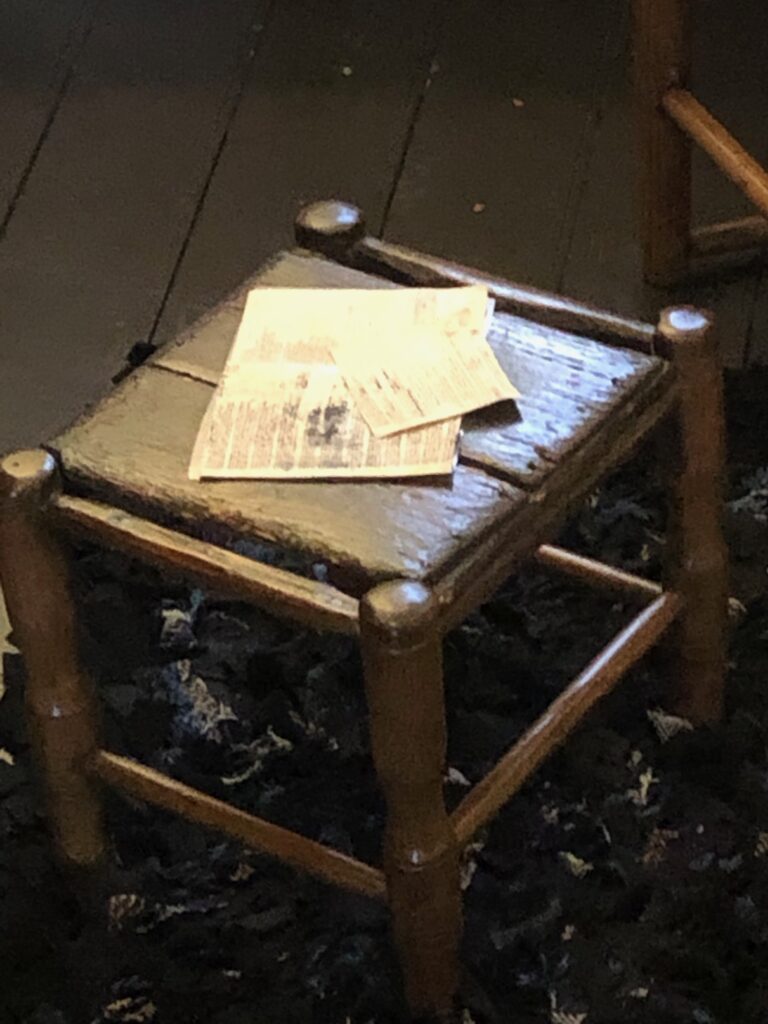
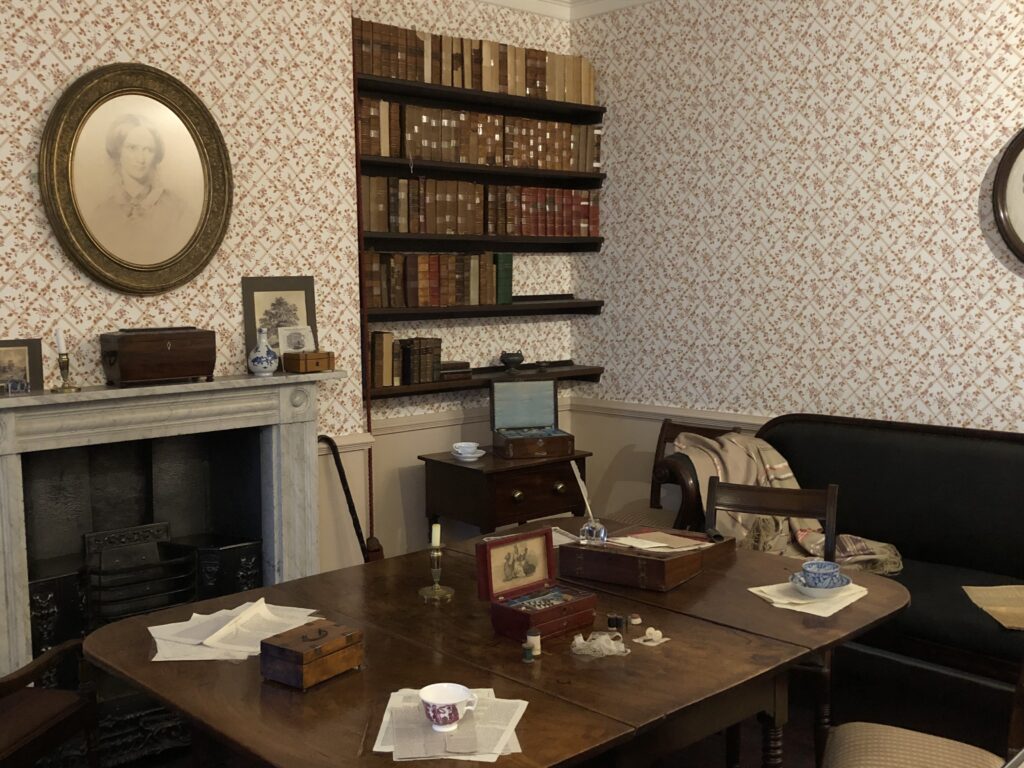
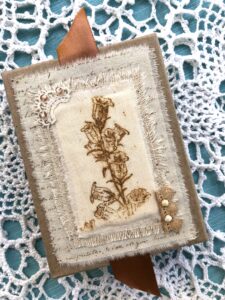
THIS WEEK’S ART is in honor of Emily, with whom I share a love of walking, nature, and art. I like creating art with a vintage look and thought it would be perfect for this little book and box. The box lid image was stamped onto muslin with rubber stamps and embellished with trim, beads, and pearls. The trims were dyed with tea. The book pages were stamped also, and again I added embellishments for color. I hand stitched the pages to the cover of cotton batting, catching the pearls on the outside of the spine as I went. For the book cover, I chose a bird image, an embroidered “E”, more bits of trim, then layered and stitched those to the cover. For a finishing touch, I reached into my trusty box of old buttons and found just the right flower button for the closure. I love using things I have on hand, and that’s just what happened with this project.
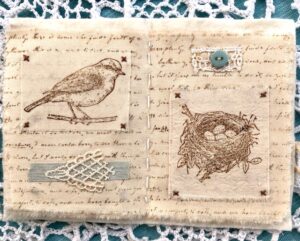
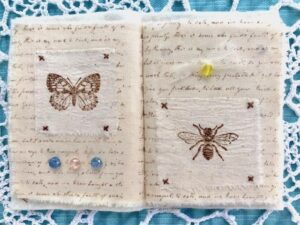
I hope you have enjoyed this Brontë journey!
Upcoming blogposts: More on early women naturalists, photographers, and painters!





